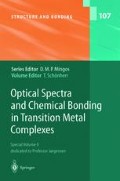Abstract
LiNbO3 (LN) is a crystal which combines excellent non-linear optical properties with the possibility of trivalent optical ion doping as rare earth ions or transition metal ions. A key problem in these trivalent optical ions-doped LN has been to determine the lattice location of the activator. This is of importance because some of their attractive features depend on the crystal field surrounding the active ion. Laser spectroscopy (LS) and channelled Rutherford backscattering (RBS) spectrometry have been applied to investigate trivalent rare earth ions as active ions, whereas Cr3+ ions can only be studied by LS. As an example, we shall focus our attention more precisely on Nd3+ centres in LiNbO3:Nd3+ and LiNbO3:MgO:Nd3+. The Nd3+ ions are in Li+ octahedral sites, off-centred by three different amounts along the c-axis, giving place to three non-equivalent optical centres. Co-doping with MgO produces an additional optical centre (Nd-Mg), in which Nd3+ ions are not located in octahedral lattice sites. Measurements performed on Cr3+-doped LN single crystals with composition varying between congruent and close to stoichiometry enabled new features to be revealed which lead us to re-interpret the optical spectra in the same way as rare earth dopants: three chromium centres (γ, α, β) are sufficient to explain the main optical features. The main centre γ occupies the Li+ regular octahedral site whereas the centres α and β are shown to be strongly connected to the presence in their surrounding of intrinsic defects related to the crystal non-stoichiometry. Stoichiometry effects on the centre distribution and possible models to explain the origin of the different centres is discussed. In addition, a nephelauxetic broadening of the 2→4A2 transition in Cr3+ caused by disorder which originates from a variation in the values of the electron-electron Racah parameters. This article has been devised as the actual state of the art of the trivalent rare earth ions and the Cr3+ transition metal ion used as probe dopants in the LiNbO3 crystal host.
Access this chapter
Tax calculation will be finalised at checkout
Purchases are for personal use only
Preview
Unable to display preview. Download preview PDF.
Author information
Authors and Affiliations
Corresponding author
Editor information
Rights and permissions
Copyright information
© 2004 Springer-Verlag Berlin Heidelberg
About this chapter
Cite this chapter
Boulon, G. (2004). Optical Transitions of Trivalent Neodymium and Chromium Centres in LiNbO3 Crystal Host Material. In: Schönherr, T. (eds) Optical Spectra and Chemical Bonding in Transition Metal Complexes. Structure and Bonding, vol 107. Springer, Berlin, Heidelberg. https://doi.org/10.1007/b96896
Download citation
DOI: https://doi.org/10.1007/b96896
Published:
Publisher Name: Springer, Berlin, Heidelberg
Print ISBN: 978-3-540-00854-5
Online ISBN: 978-3-540-36571-6
eBook Packages: Springer Book Archive

